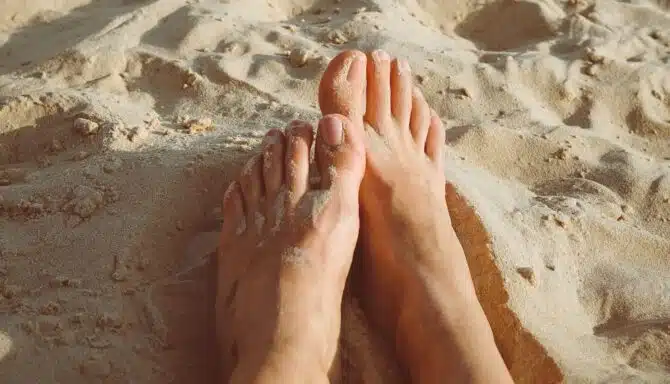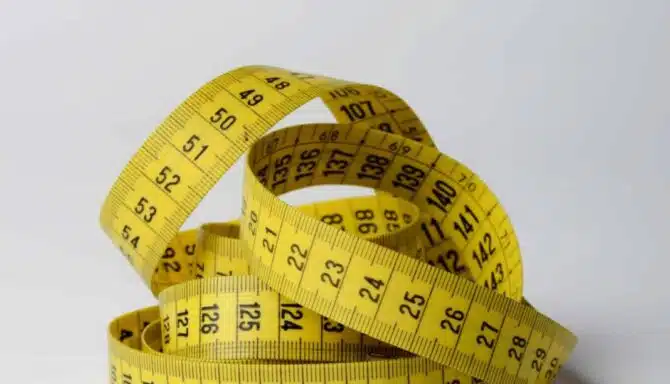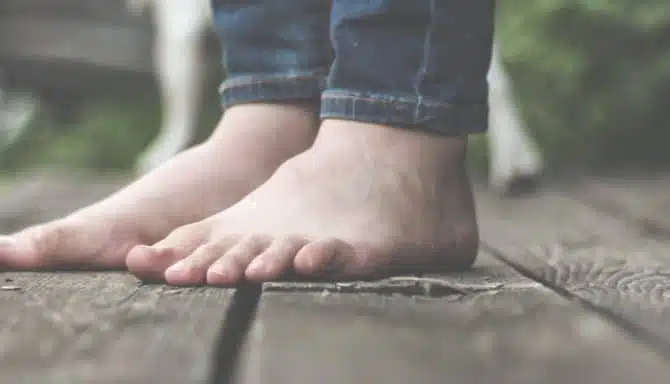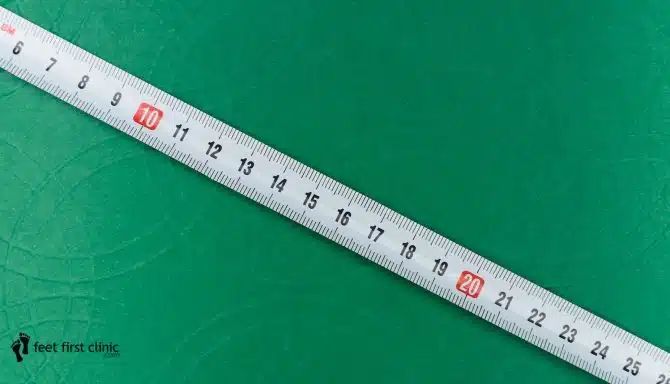April 1, 2024
As the seasons transition and we bid farewell to the winter chill, it's time to update our footwear game for the vibrant days of spring. This year, the trends are about combining style with functionality, ensuring your feet look and feel good.
From casual sneakers to rugged hikers, here are the top trendy shoes for spring footwear trends for 2024 that will elevate your style while keeping you comfortable and prepared for whatever the season throws.
Sneakers
Sneakers, particularly those embodying Converse style, combine timeless fusion and a bit of flair. Pair them with jeans for a laid-back vibe, or dress them up slightly for an elevated look.
Ara Fusion Lilly
First up on our list of trendy shoes for spring 2024 are the Ara Fusion Lilly sneakers in a sleek grey hue. These sneakers blend style and comfort effortlessly, making them perfect for the transitional period before summer arrives. Their classic sneaker silhouette and subtle grey colour are versatile enough to pair with any outfit, from jeans and a tee to a casual sundress. Plus, their stretchable, breathable construction is perfect for accomodating bunions and hammertoes, so your feet stay relaxed and comfortable all day.
Slip-ons
Slip-on sneakers allow individuals to slide them on and off effortlessly with no fuss. Wear slip-ons to run errands or to more casual outings without sacrificing comfort and style.
NAOT Okahu
Slip-ons are a must-have for any spring wardrobe, and the NAOT Okahu in black is a stylish choice that ticks all the boxes. These sleek slip-ons feature a minimalist design with a comfortable footbed that moulds to your feet for a personalized fit. Whether running errands or meeting friends for brunch, these shoes will keep you looking effortlessly chic while providing the support your feet need. They're perfect for those days when you're on the go.
Transitional sneakers
Transitional sneakers are another one of our top spring footwear trends. Their adaptable nature allows wearers to effortlessly go from work, to errands, to city strolls, complementing a range of outfits and lifestyles with their understated yet contemporary allure.
Clarks Nalle Lace
For a versatile shoe that seamlessly transitions from day to night, look no further than the Clarks Nalle Lace. These sneakers feature a classic lace-up design with a modern twist, making them perfect for the in-between period before summer arrives. Their lightweight construction and breathable materials ensure your feet stay comfortable all day, while their sleek silhouette adds a touch of sophistication to any outfit. Whether heading to the office or out for a night on the town, these sneakers have you covered.
Clarks Craft Swift
Men, step up your shoe game this spring with the Clarks Craft Swift. These casual shoes combine style and functionality, making them perfect for everyday wear. Whether running errands or meeting friends for a casual outing, these shoes will keep you looking sharp and comfortable. Their durable construction and supportive footbeds ensure long-lasting wear, while their classic design adds a touch of sophistication to any ensemble. Their versatile black colour makes them easy to pair with any outfit.
GORE-TEX sneakers
Engineered with GORE-TEX membrane, these sneakers offer exceptional waterproofing and breathability, keeping feet dry and comfortable in any weather.
ASICS Gel-Sonoma GTX
For adventurous souls who love to explore the great outdoors, the ASICS Gel-Sonoma GTX hikers are a must-have for spring 2024. Thanks to their GORE-TEX construction, these rugged shoes are designed to tackle any terrain, from rocky trails to muddy paths, while keeping your feet dry and comfortable.
November 6, 2023
Have you ever experienced that uncomfortable sensation of numbness in your toes? It's a temporary disconnect between your brain and lower extremities and may leave you wondering, "What's going on?"
Numb toes range from a minor problem to a potentially severe issue, and understanding the reasons behind this unique sensation is the first step toward finding relief.
So, if you've ever wondered why your toes sometimes go on strike, keep reading to learn more about the leading causes of numb toes and when to seek medical attention.
Numb toes: The most common causes
There are several causes of numb toes. Below, you'll find some of the top contributors and their signs.
Poor Circulation
Reduced blood flow to the toes can lead to numbness. This can occur due to sitting or standing in one position for too long, wearing tight shoes, or sitting with your legs crossed. In these cases, the numbness is usually temporary and goes away once you change your position or remove any constricting clothing or footwear.
Peripheral Neuropathy
Peripheral neuropathy involves damage to the peripheral nerves, often due to diabetes, alcohol abuse, vitamin deficiencies, or other underlying medical conditions. Symptoms can include numbness, tingling, and pain in the toes and feet.
Nerve Compression
Conditions like sciatica or a herniated disc in the lower back can compress the nerves that supply sensation to the legs and feet, causing numbness and tingling in the toes.
Frostbite or Frostnip
Frostbite is an injury caused by freezing the skin and underlying tissues. Your skin becomes cold and red, then numb, followed by hardening and paleness. Depending on the severity, you may experience frostnip (the early onset of frostbite or superficial frost bite) or deep frostbite, which involves more severe stages of nerve damage.
Tarsal Tunnel Syndrome
Like carpal tunnel syndrome in the wrist, tarsal tunnel syndrome involves compression of the tibial nerve in the ankle, leading to numbness and tingling in the toes. The tarsal tunnel is a narrow space inside the ankle next to the ankle bones, through which the tibial nerve runs. A thick ligament covers the tunnel and helps contain its inner workings – veins, arteries, tendons, and nerves. Tarsal tunnel syndrome is the most common kind of nerve compression in the ankle. Underlying causes of tarsal tunnel syndrome include direct trauma to the tarsal tunnel, flat feet, fallen arches, growths in the tarsal tunnel, and varicose veins.
Morton's Neuroma
Another type of nerve compression, Morton’s neuroma, may lead to numbness in your toes. The most common site is at the ball of the foot between the third and fourth toes. As this nerve is thicker than its surroundings, it’s at a greater risk of being blocked, which can cause numbness in the toes. You may feel a numbing sensation or like you have a pebble in your shoe.
Raynaud's Disease
Raynaud's causes blood vessels in the fingers and toes to constrict excessively in response to cold temperatures or stress. This can lead to numbness and discoloration of the affected digits.
Injuries
Trauma to the foot or toes, such as fractures or compression injuries, can cause temporary numbness. For instance, ankle or Achilles heel injuries can directly or indirectly impact the tarsal tunnel region.
Infections or Abcesses
Toe or foot infections can lead to numbness, mainly if they spread to the nerves.
Circulatory Disorders
Conditions like atherosclerosis or blood clot formation can reduce blood flow to the toes, causing numbness.
Tight Footwear
Shoes that are too narrow in width or too small in length can compress your toes and reduce blood circulation. Ensure you are correctly fitted with the right pair of footwear to allow enough space for your toes to move. You can even do a shoe sizing and fitting session here at Feet First Clinic, choosing from leading footwear.
When should you seek medical help for numb toes?
We recommend that you seek help for numb toes if any of the following apply:
The numbness in your toes is persistent, recurring, or unexplained.
You have diabetes - Numbness in the feet can be a sign of diabetic neuropathy, which requires proper management.
You experience numbness, weakness, coordination loss, or other neurological symptoms.
There is a sudden onset of numbness, especially after an injury or in combination with other concerning symptoms.
It's crucial to remember that numbness in the toes can be a symptom of various underlying conditions. An accurate diagnosis from a healthcare provider can be helpful when treating and ruling out any serious underlying issues.
May 8, 2023
Bunions can be a debilitating condition, but there is still plenty of hope to manage it and reduce the pain it causes.
Bunions are joint deformities located at the base of the big toe. You may see bony bumps on the foot's inner side, which can be painful and uncomfortable. Bunions can also affect the alignment of the foot and cause the big toe to point inward toward the other toes. (They can also exist along the outer edge of the foot at the base of the little toe. These are known as bunionettes.)
Understanding the causes, symptoms, and treatment methods can help spot bunions early and get you back to feeling better soon. Below you'll find a comprehensive guide to understanding and treating bunions.
Causes of bunions
Various factors, including genetics, foot shape, and footwear, cause bunions. Family history can dictate the likelihood of bunions due to inherited foot shape. People with foot shape abnormalities or imbalances like flat feet, low arches, or loose joints are also at a greater risk of developing bunions as these underlying conditions put more pressure on your big toe and surrounding areas. All of these risk factors are quite common; roughly six percent of Canadians yearly have foot injuries, bunions, and flat feet or fallen arches.
Additionally, external factors like tight or narrow shoes or high heels can squeeze your toes together, which adds pressure and restricts movement across the toes. Over time, your big toe joint may shift, causing it to protrude outwards. Shoes with narrow toes can trigger and catalyze developing bunions, but footwear alone is not solely to blame.
Symptoms of bunions
The most prominent symptoms of bunions are pain and discomfort in your big toe. You may also experience swelling and redness and have a large bony protrusion at the base of your big toe. Due to the outgrowth and irritation, the skin over the bunion may become thickened and callused.
The toe may become rigid and difficult to move in more severe cases. You may also experience difficulty wearing your regular footwear as the protrusion (resulting from your bones shifting) increases your feet's surface area. The rigidness of the big toe makes the big toe more susceptible to strain and over-exertion. Lack of flexibility further imbalances the weight across your feet and toes. This causes a vicious cycle that can further aggravate the bunion.
Treatment for bunions
Although bunions can be painful, not all hope is lost. You can do plenty to recognize bunions early or treat them via surgical or non-surgical methods to improve your quality of life. Depending on the severity, you can slow the progression of bunions or find ways to manage the discomfort effectively.
The exact treatment typically depends on the severity of the bunions, a person's lifestyle demands, and their age. Milder cases may be managed and treated with non-surgical treatments, including specific devices, such as bunion splints or custom orthotics, or physical therapy. The more severe cases may require surgery, which in and of itself has its pros and cons.
Non-surgical treatments for bunions
Non-surgical treatment for bunions focuses on limiting further aggravation of the affected joint and slowing the bunion's progression. This in turn decreases pain and improves quality of life. Such treatments include:
Alter your footwear: Wear shoes with a wide and deep toe box to reduce pressure on the bunion. Avoid wearing high heels or shoes with pointed toes.
Use padding and taping: Apply a pad or cushion to the bunion to reduce pressure and protect the skin. Taping can also help to keep the foot in a more natural position. You can also try bunion splints and bunion aligners to properly align the joint as you go about your daily activities.
Custom-made orthotic inserts or generic inserts like Superfeet may help to redistribute pressure and support the foot. Padding or cushions to protect your feet may also help.
OTC pain relievers like ibuprofen can help reduce and keep swelling and inflammation at bay.
Stretching and strengthening exercises can improve the flexibility and strength of the foot and ankle. Strengthening the muscles around the joint also halts the vicious cycle of bunion growth.
Maintain a healthy weight to prevent sudden impact on your feet and toes.
If non-surgical treatment for bunions hasn't improved the condition, you can explore surgical treatments, which we dive into below.
Surgical treatments for bunions
More than 100 different types of surgeries for bunions exist. An orthopedic surgeon or podiatrist may perform the surgery, depending on the nature and type of procedure. With surgery, the goal is physically to eliminate the bunion. However, surgical treatments have risks, and a bunion may still return in the future, so you should consult a medical professional. No one surgery is perfect for everyone; it's highly individual.
Some of the more common surgeries for bunions are:
Bunionectomy is a surgical procedure in which the bony bump is removed from the joint. The goal is to realign the joint with the rest of the foot to improve the position.
Osteotomy is a procedure that involves cutting a portion of the bone to improve the toe's position.
Arthrodesis (commonly known as joint fusion surgery) is a procedure that adjoins joints together.
Resection arthroplasty is a procedure that removes the damaged joint. The joint is then rebuilt during the procedure.
Artificial implant insertion is a procedure where an implant replaces the deformed first metatarsophalangeal (MTP) joint.
November 7, 2022
Feet come in different shapes and sizes, and some people go through life with wide feet.
You could simply be born with wide feet, or your feet may increase in width as you get older. Wide feet can also be caused by a foot deformity (like bunions and hammertoes) or a temporary condition like pregnancy.
Whatever the reason is behind your wide feet, shoe shopping can be an ordeal. Wide shoes are certainly available, but many people make the mistake of wearing ill-fitting shoes that heighten discomfort levels. In terms of managing wide feet, hunting for the proper footwear is key. Let's look at some tips you can use to find shoes for wide feet!
How to Find Shoes for Wide Feet
Don't trust the listed size
Look for wide and extra wide widths
Buy shoes with laces
Search for shoes with removable insoles
Check the toe room
Try shoe stretching services
Don't Trust the Listed Size
Sometimes, people with wide feet just go for one of the largest sizes and trust it will fit. This can be more common for people who tend to shop online.
But this isn't wise. Many shoe companies don't focus on the importance of wide shoes and simply list shoe options as narrow, wide, long, etc., with a standard numerical size (these refer to the length of the shoe, not the width).
But with wide feet, you need extra information to trust that the shoe will fit properly. Don't simply assume a basic "wide" description will be enough to comfortably accommodate your feet. Furthermore, you should always shop for shoes in person when you have larger feet.
Look for Wide and Extra Wide Widths
Try to find shoes that list width options. For example, a shoe may have a "B" width size as a "standard" option. But width options may also extend to "D - Wide, 2E - Extra Wide, and 4E - XX-Wide."
Pay attention to shoe manufacturers that list these options. And as we've mentioned before, don't try to go up a size and assume it will fit. Buying a larger will size will leave you stuck with a longer shoe, not a wider one.
Buy Shoes with Laces
Lots of different shoes come with laces, even heels. Opting for shoes with laces allows you to adjust according to your foot's width and loosen them up if needed. Lacing can also enhance the functionality of your footwear and can boost comfort levels after going for a long walk.
To maximize space, try using the eyelets that are closest to the ankle and leave the eyelets closest to the toes empty. You'll be able to tighten your laces without restricting the front of the shoe, where the foot is the widest.
Search for Shoes with Removable Insoles
While shoe shopping, try to find shoes where you can take out the footbed. Not only do removable insoles allow you more wiggle room, but having the option to replace them with custom orthotics or specialized insoles will give you added protection from foot pain.
Check the Toe Room
Assessing the toe room can indicate if you need to go up in width or both size and width. A good way to do this is to see if you have a finger's width of room between your toe and the end of the shoe. If you do, but the shoe still feels tight, you only need to go up in width.
Try Shoe Stretching Services
At Feet First Clinic, shoe stretching services are available by walk-in --- no appointment necessary. That said, it's important to note that this only works if your shoes are already close to the proper size and just feel a little tight. Shoe stretching also only works if you have a pair of shoes made of leather or natural material.
Foot clinic staff can expand the width of the shoe by one full-width size.
December 28, 2020
Did your feet just go from a size 8 to an 8.5? What gives?
Swelling in your feet happens to everyone from time to time to varying degrees. Swollen feet are often caused by standing for long periods of time, or after extending exercise such as walking or running. When your on your feet, gravity pulls blood towards your feet and there can be certain degrees of pooling.
The actual source of swelling (known by its medical term edema) is attributed to your small blood vessels leaking fluid into nearby tissues.
Causes of Swollen Feet
Like many foot conditions, possible causes are wide-ranging. If you find your feet ballooning, and are concerned, look out for any of these causes:
Pregnancy: A common symptom of late pregnancy is for feet and ankles to swell. This swelling comes from fluid retention and increased pressure on the veins.
Sedentary lifestyle: A lifestyle with little exercise means that excess fluid accumulates in the feet.
Being overweight
Wearing ill-fitting shoes: Wearing tight shoes can put pressure on your feet and reduce circulation to the area. This pressure can encourage pooling of fluid in your legs rather than the blood flow you want to aim for in reducing swollen feet and legs.
Hot weather: In fact, studies show that Google search trends for ankle swelling are greatest in spring and summer indicating a pattern among the general population. This is due to greater liquid retention in hot weather. In fact, the study found that, "Internet searches for information on ankle swelling are highly seasonal (highest in midsummer), with seasonality explaining 86% of search volume variability." Although this is not directly related to cases of ankle swelling, it's well-documented that Internet searches accurately reflect trends in the population.
Alcohol: Since your body retains more water when drinking, alcohol consumption can cause swollen feet. If you find your feet are consistently swollen when consuming alcohol, it could be a sign that you're drinking too much (or too often), or it could be a sign of problems with your liver or kidney.
Blood clots: Blood clots in the lower legs can trap fluid in the foot and ankle area as it limits the return flow to other parts of your leg and body.
How Do You Reduce Swelling In The Feet?
Fortunaely there are many DIY methods for treating swollen feet. Even better, some of these at-home methods are inexpensive, and highly effective. These include:
Soak your feet in cool water.
Drink plenty of water.
Wear shoes that allow your feet to breathe and move freely.
Rest with your legs elevated.
Wear compression stockings/compression gear.
Do a few minutes of walking and simple leg exercises: If you sit for long periods of time, make an effort to get up once an hour for a short walk. Even if this is to refill your water bottle or go to the washroom, these regular breaks help with circulation and reduce the pooling in your lower legs.
When Should I Be Concerned About Swollen Feet?
Generally, if you can trace swollen feet back to a specific activity, like hot weather, or standing, then there is little cause for concern. If swelling is a perpetual problem, then you may want to seek medical help to determine the root cause of the condition.
There are a number of foot conditions that can be a greater cause for concern than basic edema.
Types of edema
Peripheral edema. It could be a sign of problems with your circulatory system, lymph nodes, or kidneys.
Pedal edema.It’s more common if you’re older or pregnant. It can make it harder to move around in part because you may not have as much feeling in your feet.
Lymphedema. This type of edema is often causes damage to your lymph nodes, which are tissues that that help filter germs and waste from your body. The damage may be the result of cancer treatments like surgery and radiation.
Blood clots
Blood clots are of great concern. Not only do blood clots cause swelling in your legs (and in other parts of your body), these clots can be life-threatening. If not addressed, a blood clots can travel to the heart and lungs and be fatal. Watch for specific signs of blood clots including swelling in one leg, a low-grade fever, and even possible changes in colours to your affected legs. Call your doctor immediately if you suspect this foot condition, even if it's just to be safe.
Can high blood pressure cause swollen feet?
Swollen feet can be a side effect of certain drugs meant for treating diabetes. For example, calcium-channel blockers for treating high blood pressure may be a culprit. You may want to ask your doctor about dosage and the type of medication if you find that the swelling is out of control or bothersome. (Swollen feet can add not insignificant weight to your body, and make walking difficult.)
People with diabetes also have an increased risk of infection, which can cause swollen feet.
Reduce Swollen Feet With Expert Advice
We pride ourselves in effectively communicating your concerns and needs as comfortable as possible. Call anytime to ask about your specific concern and we’ll make sure to provide actionable steps towards getting your feet as happy and healthy as possible!
Call us at 416-769-3338 or Click Above to Book Your Assessment Today!
December 14, 2020
Were you once a size 8 and now you're a size 9? No, your mind isn't playing tricks on you. And your memory hasn't disappeared. This change is actually quite common.
After all, your feet absorb a lot of impact. Decades of it, in fact. It should come as no surprise that this shock absorption can alter our feet, albeit quite subtly. More likely than not, you will only notice this change over months, if not years. A drastic change in shoe size shouldn't happen overnight (if it does, you should seek medical advice).
Generally, ageing has a number of effects on our feet, including changing its size and shape. Our feet typically stop growing in our early 20s (depending on when you started and finished puberty), but in our later years, our feet may grow again.
Why Do My Feet Change Size?
A number of factors can result in changes to our shoe size over time. Some are age-related, others are more event-related including pregnancy or as the result of a condition. Below you'll find some of the contributing factors.
Flat Feet
As we age, our feet flatten. Time and gravity widen and lengthen our feet naturally as the body absorbs years of impact. Ligaments and tendons begin to weaken over time as well causing flatter and larger feet. Imagine if you had higher arches when you were younger. If those arches begin to collapse over time, there is less upward range of your feet, and your feet get longer.
Foot and Toe Deformities
Additionally, adults can develop foot conditions and deformities over time that change the foot's anatomy. Bunions, or hallux rigidus, for example, either add volume or change the width of the foot which may require larger footwear. If not larger footwear, many brands also offer wide variations of their most popular lines of shoes. These have wider toe boxes, and otherwise are true to size.
Body Changes
Slower metabolism, or changes in your diet can mean either weight gain or weight loss. These greater changes to your body have effects on your feet. Weight gain, for example, means greater pressure on your feet. Additionally, the fat pads on the base of your feet diminish over time.
Diabetes and Arthritis
These conditions can affect our feet. Diabetes and arthritis can impact the amount of swelling in your feet as well as blood flow which can greatly change the shape of our feet.
Pregnancy
Bigger feet during pregnancy is 100% normal. This is likely temporary and a direct result of your feet swelling. In some cases, this increase may be permanent, but only if the ligaments and tendons in your feet weaken to the point where they don't recover post-pregnancy.
What Time of Day Should I Try on Footwear?
You want to account for your feet at their largest. Since feet swell throughout the course of the day, trying on footwear is best done in the late afternoon or evening. If your schedule restricts you to try on footwear in the morning, remember to account for the difference in your feet between morning and night.
Always try shoes on with both feet. Not all feet are created equally, and you can even have as much as a half-size difference between your left and right feet.
Get Your Feet Measured by Professionals
Ill-fitting shoes that are the leading cause of foot pain and foot problems and eight out of 10 people’s shoes fit incorrectly.
Follow these tips when trying on a new pair of shoes or winter boots.
Try on footwear later in the day to ensure a proper fit.
Try on both shoes, and use the larger foot to dictate the size of shoe you buy.
Stand up while measuring your feet.
Stand and walk for a few minutes before determining proper fit. Take your time.
Try on different brands, and models of shoes.
Try on different size shoes including 0.5 sizes.
Wear the socks or garment you would normally to mimic real-world conditions.
Here at Feet First Clinic, we offer every customer a comprehensive footwear assessment free of charge to ensure that you invest in the healthiest footwear for your unique feet. Our footwear specialists and chiropodists will help match your foot shape, structure, and alignment to specific shoes and footwear features that answer to your corrective, supportive, or accommodative needs.
Customize Your Shoe Size
If you find your shoes fit well, but they could fit better, consider shoe stretching.
Shoe stretching is best suited to expanding shoes that are close to the right size but barely too tight. Stretching your shoes can increase:
Width: Increase of up to one size widthwise
Length: Increase of up to 1” inch lengthwise
Toebox: Increase of up to 1” in the height of the toe box
Instep: Increase of up to 1/2” in the vamp and instep area
This fine-tuning can give you that extra bit of room in your shoe to ensure the fit is just right. Most types of footwear can be stretched, and we offer this service here at Feet First Clinic, located at 2481 Bloor St W. Whether it's buying shoes, measuring your feet, or stretching shoes you already own, we're your one-stop shop for all of your footcare needs.
Your Footwear Solutions Live Here
All under one roof! Our team is trained to handle any and all your foot health concerns. From mild, to critical, we cover all sides of the foot needs spectrum. Call us to ask about actionable steps towards your solution today!
Call us at 416-769-3338 or Book Your Assessment Today!






